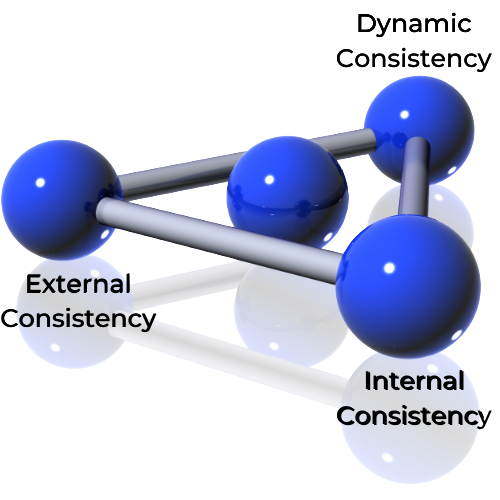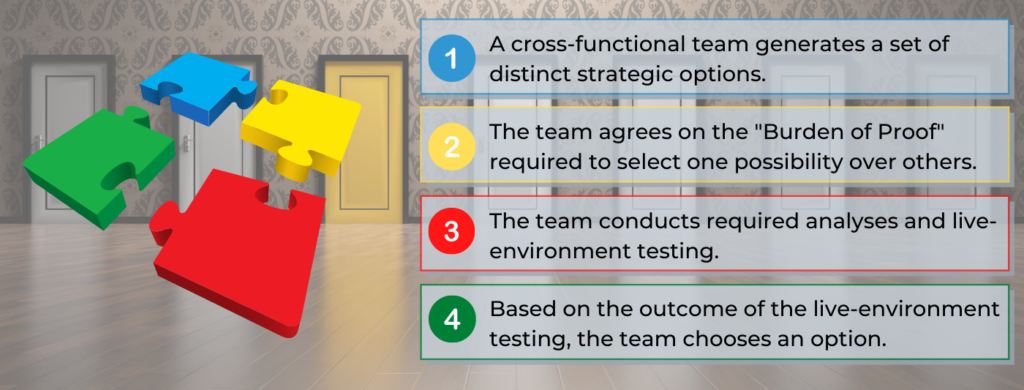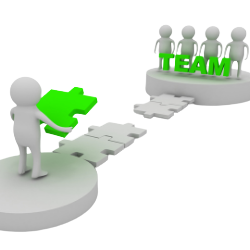– THE TRADITIONAL VIEW –
Common perceptions of strategic planning in organizations

Gives me a headache even thinking about it.
A client from the Publishing industry
Usually very unproductive, to be honest really a waste of time.
A client from the Consumer Goods industry
This has really never produced any great ideas; in fact it’s only used to prove or legitimize the decisions that have already been taken.
A client from a Not-For-Profit Organization
Hey, is it October already?
A client from the Consumer Goods industry
Usually just lot of talk and production of endless amounts of presentations and paper…in most companies, strategic planning processes do not actually produce any real strategies.
A client from the ICT industry
Do people actually read the stuff that we produce.
A client from the Food and Beverage Industry

Based on our experience, the quotes above reflect the usual perception clients have of strategic work across organizations, big and small. It is often reflected of being a stand-alone activity to be accomplished once a year without a real impact on the day-to-day activities of an organization.
Hence, a burdensome task for the people involved. We, on the other hand, believe strategic work should be a measurable and most of all fun activity!
What a strategy really is?
For an organization to engage in real strategic work and, as an end-product, be capable of developing effective competitive strategies it is important to underline what a strategy really is:

A strategy is an integrated set of choices that positions a firm in an industry in a way that generates superior financial return over a long-term period. The key tests to verify the effectiveness of organizations competitive strategies include; Internal Consistency, External Consistency and Dynamic Consistency.
Acknowledging the many common misconceptions about strategic planning, we have adopted a completely different approach through which we have found a lot of success with our clients across industries.
In order for an organization to increase the likelihood of creating larger, systemic strategies, that provide a base for finding new peaks (peak = strategies with sustained competitive advantage) instead of just refining the existing peak, our recommendation is a framework called – A possibilities-based approach to making strategic decisions.

– HOW WE LEAD AND FACILITATE –
A possibilities-based approach to making strategic decisions
Through a possibilities-based approach we have successfully been able to return measurable results and, most of all, enjoy into the strategic planning process for many of our clients across industries.
A possibilities-based approach entails a four-step scientific method by creation of novel hypotheses and the careful generation of the “live-environment” testing to verify these hypotheses. Hence, bringing scientific approach to the Art of Strategic Work!

In-depth experience across all four steps
We have successfully worked with our clients across all of the four steps of a possibilities-based approach.

In step one, we have been tasked to provide input on the strategic possibilities, form well-performing cross-functional teams and to facilitate the idea generation of teams on how their particular business might succeed in the marketplace. In essence, generating ideas and possibilities for success stories that are internally consistent.
In step two, we have helped our clients to design “Burden of Proof” methodologies which reverse-engineers each possibility with a question – “What must be true for the possibility to be a terrific choice?” By focusing on the question “what would have to be true” this part focuses on fleshing out the underlying logic and makes more concrete the sources of doubt. Internal, external and dynamic conditions for each possibility are formulated with great detail.


In step three, we have led and facilitated required live-environment testing for the various possibilities. In this part it is essential to understand that analyses need to be sequenced in such a way that starts from the outcome that the group feels is least likely to occur. In other words, at the top of each possibility are the conditions that the group thinks are least likely to materialize. If this condition does not hold after testing no further analysis is required.
In step four, we have helped our clients analyze the results from the live-environment testing and make recommendations on how to navigate the decision making process indicating both pros and cons. By walking our clients through the entire process we have been successful at shifting our clients mindsets to asking the right questions about each strategic choice available. Right strategic work is, at the end, about shifts in mindsets.


